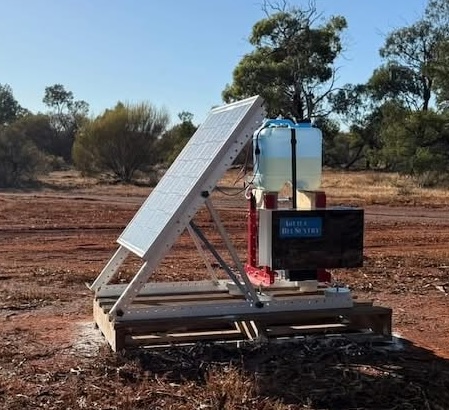Varroa
Fat Bees Hive Scales and Aquila BeeSentrys have a place in commercial beekeepers dealing with Varroa Destructor
Fat Bees designed and produces Aquila BeeSentry. BeeSentry is a remote sensing rapid detection device for varroa. It has a major role in the biosecurity systems of Western Australia, Tasmania and the smaller islands like Flinders and Kangaroo to keep them free of varroa.
Western Australia, through the Bee Industry Council, is commissioning 36 Aquila BeeSentrys across the Nullarbor, ports, freight areas and other transport hubs. ABS is designed to detect varroa from hives on ships, trucks, trains and industrial areas where containers and freight and varroa hives may end up. It attracts bees directly into the unit by fanning aroma from a wax melter over a sugar syrup feeding plate, where images are sent, via 4G, and AI scans for mites.
How can Aquila BeeSentry help Commercial Beekeepers?
A query from a commercial beekeeper answered the question..
The major vector for transmission of mites is human transport, otherwise, varroa spreads very slowly through the environment. Prior to a load being shifted, BeeSentry is positioned at the site of the next expected flow. This is done to determine if the area is varroa-free. If free of varroa, the load can be shifted; if varroa is present, then not.
In areas where varroa is not widely distributed, Aquila BeeSentry is a valuable tool to avoid varroa entering managed hives by helping commercial beekeepers avoid infested areas. It is expected that eventually all areas will become infested with varroa, but in non-human vectored areas, this may take some time. Hopefully providing time for commercial beekeepers to improve their genetic stock.
The major non-human or natural vector for varroa into managed hives is robbing. Staying on flows means less robbing and less chance of varroa entering your hives. Fat Bees Hive Scales help you stay on a flow, and Scout Hives tell you when the next flow is starting. Only shift when the flow has started.
Fat Bees Hive Scales detect the strongest, healthiest hives/queens to improve genetics for honey production and varroa resistance. No need to have scales under every hive. Once hives have been assessed for strength, hives can be cycled over the scales.

